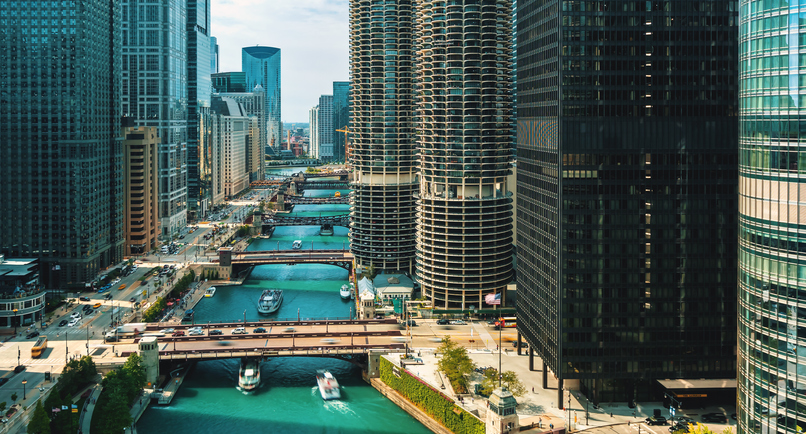More than $1 billion in New Jersey taxpayers’ money is riding on the success of a new $5 billion regional mall and entertainment complex that has taken 17 years to develop.
The New Jersey Sports and Exposition Authority asked for proposals in 2002 to redevelop the Meadowlands site in East Rutherford, New Jersey next to the stadium where the New York Giants and Jets play. Xanadu, the developer of the retail, hotel, and office project, began construction in 2005, with a target opening date of 2007. The initial developer ran into money problems, and its successor lost financing in 2010.
Triple Five, owner of the Mall of America in Bloomington, Minnesota, acquired Xanadu in 2011. The authority approved Triple Five’s addition of water and amusement parks in 2013, and construction began in 2015.
The first phase of the American Dream Meadowlands development opened on October 25, 2019, and the rest is projected to be completed by March 2020.
Plentiful Government Assistance
The New Jersey Economic Development Authority approved $390 million in tax incentives for Triple Five in 2013, and when the project was delayed, it renewed the tax incentives in 2017.
With backing from the sports authority and the Wisconsin Public Finance Authority, a quasi-public agency, $1.15 billion in tax-free municipal bonds were issued in 2017 to help cover the cost of construction. The bonds are unrated, which means they are particularly risky.
The bonds are to be repaid from sales taxes generated by the complex. The New Jersey Local Finance Board granted Triple Five local redevelopment tax incentives worth up to $800 million in 2015. In addition, state and local authorities have upgraded mass transit and highway access.
Promised Economic Benefits
Triple Five convinced the state to invest in the project by claiming it would create roughly 16,000 jobs, increase tourism to New Jersey, and generate revenue from sales taxes. Triple Five can cash in on the tax incentives only when the massive shopping and entertainment complex opens and begins making money.
State officials expect American Dream Meadowlands will bring New Jersey $3.5 billion in tax revenue over 20 years, including $2 billion in sales taxes and $1.5 billion in corporate taxes, income taxes, and other state taxes.
‘American Nightmare’ Mall?
It is hard to predict whether a shopping mall will be economically viable, and use of reliable numbers is critical, says James R. Barth, Lowder Eminent Scholar in Finance at Auburn University and a policy advisor to The Heartland Institute, which publishes Budget & Tax News.
“[It] requires calculating the expected future benefits and costs, and then determining whether the benefits exceed the costs,” Barth said. “Without such information, it is hard for anyone to determine whether once the mall opens it will make money.”
American Dream Meadowlands might turn out to be a foolish use of New Jersey taxpayers’ funds, Barth says.
“A wise investment is based on a careful calculation of the net benefits and costs of an investment project,” Barth said. “This does not appear to have been done by the governmental officials approving the subsidies in the case of the shopping mall. The “American Dream’ may therefore turn out to be the ‘American Nightmare.’”
Mass Mall Closings
Hundreds of shopping malls in the United States have closed in recent years. Sears, a once-ubiquitous mall retailer, closed another 51 locations at the end of 2019.
Granting billions of dollars in tax incentives for a new shopping mall is a dubious investment when traditional brick-and-mortar anchor stores such as Sears are closing down because of increasing competition from internet sales, Barth says.
“Traditional shopping malls close when they are no longer economically viable,” Barth said. “There is far more competition today from online suppliers of products like Amazon, which adversely impacts the sales of retailers located in shopping malls.”
‘Usually Far Too Optimistic’
Private developers looking for tax incentives often inflate the claimed economic benefits of taxpayer-funded projects, says Art Carden, an associate professor of economics at Samford University.
“Spending government money on private development is rarely if ever a good investment,” Carden said. “We know from the study of things like stadiums, arenas, and convention centers that ‘economic impact’ projections are usually far too optimistic.”
Economic impact studies used to predict outcomes like job creation tend to be unreliable, Carden says.
“Developers are often able to produce a report that justifies, at least in some eyes, claiming the credits,” Carden said. “However, these studies often make questionable assumptions about multipliers and that double- and triple-count the same economic activity.
“They will be able to show just about anything with the right assumptions,” Carden said.
Money ‘Up for Grabs’
Tax incentives for private developers could keep a project alive even if it’s a poor investment, Carden says.
“If a billion dollars is up for grabs, there are a lot of people with strong incentives to keep things moving,” Carden said.
The justification for the mall project is unclear, Barth says.
“Without a defensible economic or financial assessment of the net benefits provided to the public, only the New Jersey government can explain why keeping malls open makes sense,” Barth said.
Internet Info
Matthew Glans, “Research & Commentary: Targeted Tax Incentives Do Not Encourage Growth,” The Heartland Institute, January 23, 2019: https://www.heartland.org/publications-resources/publications/research–commentary-targeted-tax-incentives-do-not-encourage-growth
